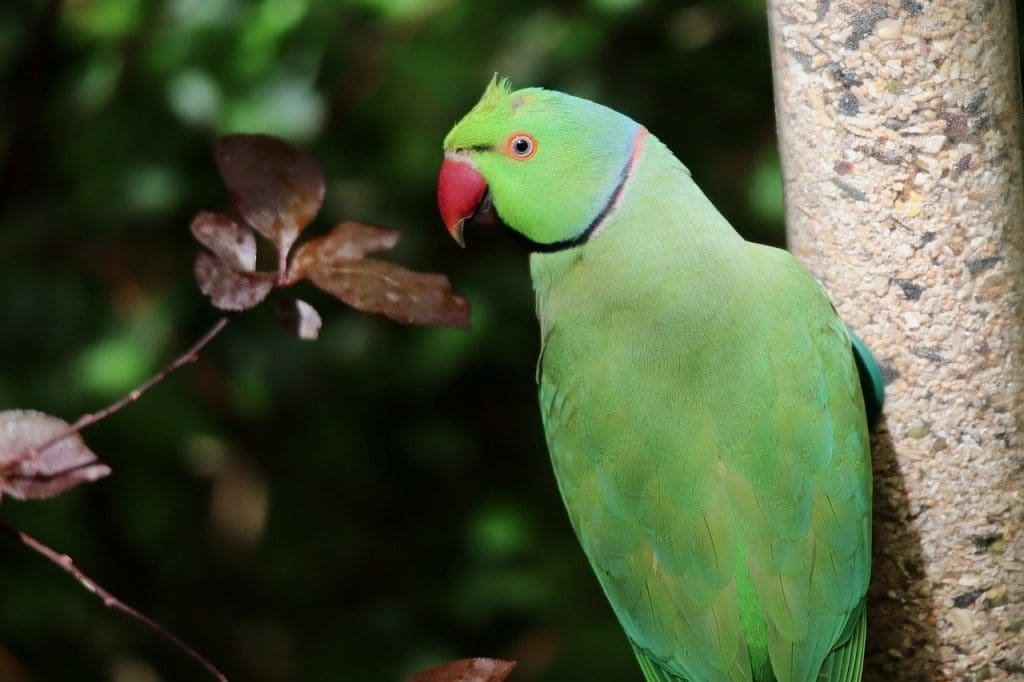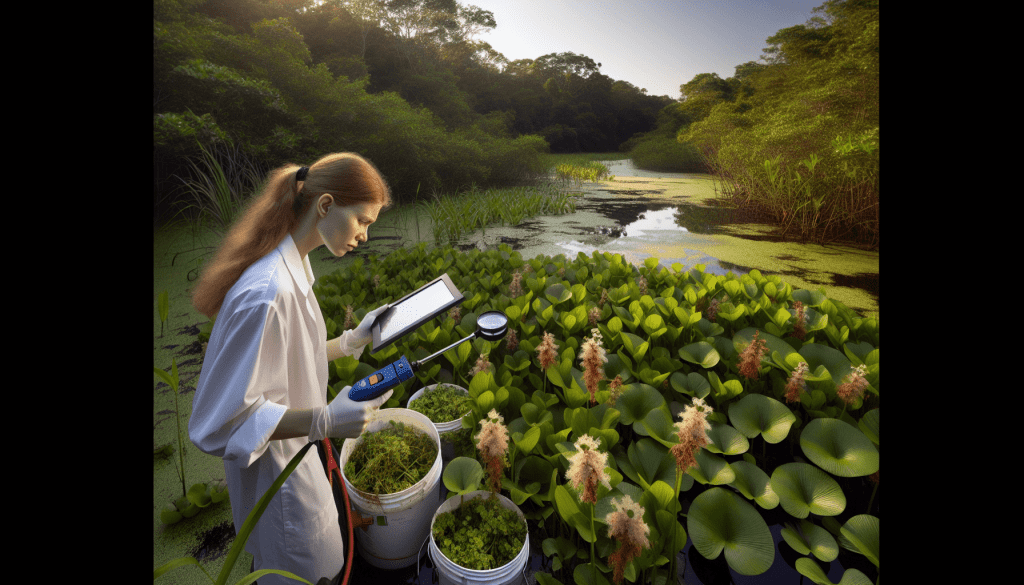In the quest to manage the tough and invasive alligator weed, understanding the crucial factors to consider when choosing a control method can save you time and effort. In “Key Factors To Consider When Choosing An Alligator Weed Control Method,” you’ll uncover essential tips and strategies to effectively tackle this persistent plant. From evaluating the environmental impact of different methods to balancing costs and benefits, this article guides you through making informed decisions that align with your specific needs and situation. With the right approach, you can reclaim your space from the grip of alligator weed. Have you ever wondered about the best way to tackle the invasive alligator weed in your water bodies or garden? If so, you are not alone. Dealing with this pesky plant can be quite a challenge. In this article, we’ll dive deep into the key factors you need to consider when choosing an effective alligator weed control method. We’ll break down each factor to help you make an informed decision that’s best for your specific situation.

Understanding Alligator Weed
Before we get into the specifics, it’s crucial to understand what alligator weed is and why you might need to control it. Alligator weed (Alternanthera philoxeroides) is a resilient, fast-growing aquatic plant that originated in South America. It thrives in both water and moist soil, making it a versatile and tenacious invader. This plant can quickly form dense mats that can obstruct waterways, disrupt ecosystems, and even affect your crops if left unchecked.
Why Control Alligator Weed?
You might wonder why controlling alligator weed is so essential. The answer lies in its invasive nature and the potential harm it can cause. Alligator weed can:
- Outcompete native plants.
- Impact agricultural activities.
- Obstruct water flow in irrigation canals and drainage systems.
- Decrease biodiversity.
- Create breeding grounds for mosquitoes.
Clearly, controlling alligator weed is not just about aesthetics; it’s a necessity for ecological balance and agricultural efficiency.

Choosing the Right Control Method
Biological Methods
Biological control methods involve the use of natural predators or competitors to manage alligator weed. This method can be quite effective and environmentally friendly but comes with its own set of considerations.
Pros:
- Environmentally sustainable.
- Can provide long-term control.
- Reduces the need for chemical interventions.
Cons:
- Slow to establish and show results.
- Could potentially affect non-target species.
- Requires continuous monitoring.
One of the most commonly used biological controls for alligator weed is the alligator weed flea beetle (Agasicles hygrophila). These beetles feed on the plant’s leaves and stems, gradually reducing its growth and spread.
Chemical Methods
Chemical control involves the application of herbicides to kill or inhibit the growth of alligator weed. Although this method can provide quick results, it’s essential to use it responsibly.
Pros:
- Fast-acting.
- Can be highly effective when used correctly.
- Suitable for large-scale application.
Cons:
- Potential environmental impact.
- Risk of developing herbicide-resistant strains.
- Harmful to non-target plants and aquatic life.
It’s crucial to select the right herbicide and follow the manufacturer’s instructions to minimize any adverse effects. Common herbicides used for alligator weed control include glyphosate and 2,4-D.
Mechanical Methods
Mechanical control involves physically removing alligator weed from the affected area. This method is labor-intensive but can be very effective when done properly.
Pros:
- Immediate results.
- Can be combined with other control methods.
- No chemical residues.
Cons:
- Labor-intensive.
- Temporary results; regrowth is possible.
- Disruption to the aquatic environment during removal.
Mechanical control methods include hand-pulling, mowing, and dredging. While these methods can be effective, they often require repeated efforts to keep the weed under control.
Integrated Pest Management (IPM)
Integrated Pest Management (IPM) combines several control methods to manage alligator weed effectively. By using a mix of biological, chemical, and mechanical methods, you can create a balanced approach that minimizes the disadvantages of any single method.
Pros:
- Comprehensive and balanced approach.
- Reduces the reliance on chemical interventions.
- Can be tailored to specific situations.
Cons:
- Requires careful planning and monitoring.
- Can be more labor-intensive and costly initially.
IPM is often considered the best approach for managing invasive species like alligator weed because it addresses the problem from multiple angles, thereby increasing the chances of long-term success.
Factors to Consider When Choosing a Control Method
Extent of Infestation
The extent of alligator weed infestation is a critical factor in choosing a control method. If you have a small, localized infestation, mechanical or biological methods might be sufficient. However, for larger infestations, you may need to consider chemical methods or IPM.
| Infestation Size | Recommended Methods |
|---|---|
| Small | Mechanical, Biological |
| Medium | Chemical, IPM |
| Large | Chemical, IPM |
Environmental Impact
Considering the environmental impact of your control method is essential. Biological methods typically have the least environmental impact, while chemical methods can pose risks to non-target organisms and ecosystems. Mechanical methods fall somewhere in between, depending on how they are implemented.
Cost and Resources
Your budget and available resources will also influence your choice. Mechanical control can be labor-intensive, so it might not be feasible if you lack the workforce. Chemical control, while effective, can be expensive due to the cost of herbicides and the need for repeat applications. Biological control might require initial investment and ongoing monitoring but can be cost-effective in the long run.
Regulatory Requirements
Always check local regulations before choosing a control method. Certain chemicals may be restricted or require special permits. Biological control agents might also need approval from environmental agencies. Ensuring compliance with regulations will save you from potential fines and legal issues.
Long-Term Sustainability
Think about the long-term effectiveness of your chosen method. Biological methods offer sustainable control but may take time to establish. Chemical methods provide quick results but often need repeated applications. Mechanical methods can offer immediate relief but may not be sustainable for large infestations. IPM offers a balanced approach that can provide long-term sustainability.

Best Practices for Implementing Control Methods
Planning and Monitoring
Successful alligator weed control starts with a well-thought-out plan. Conduct a thorough assessment of the infestation, identify the most suitable control methods, and set clear objectives. Monitoring is equally important to track the effectiveness of your chosen methods and make adjustments as needed.
Combining Methods
Combining different control methods can improve your chances of success. For example, you might start with mechanical removal to reduce the weed’s biomass, followed by biological control to keep the population in check. Chemical control can be used for any remaining patches that are difficult to manage otherwise.
Community Involvement
Engaging the community in alligator weed control efforts can provide additional resources and support. Educational programs can raise awareness about the issue and encourage community members to report new infestations and participate in control activities.
Choosing the Right Time for Control
Timing is crucial when it comes to managing alligator weed. Understanding the plant’s life cycle and the optimal times for applying different control methods can make a significant difference.
Seasonal Considerations
Alligator weed typically grows more rapidly during the warmer months. Therefore, the best time for control efforts is usually in late spring to early fall when the plant is actively growing.
Life Cycle Stages
Targeting the weed at specific stages of its life cycle can enhance the effectiveness of your control methods. For example, young, actively growing plants are more susceptible to herbicides and biological agents.

Success Stories and Case Studies
To give you an idea of what works in real-world scenarios, let’s look at a few success stories and case studies.
Case Study 1: Agricultural Impact Management
In a farmland area in Louisiana, alligator weed had severely impacted crop yield by clogging irrigation channels. An IPM approach was implemented, combining mechanical removal, herbicide application, and the introduction of the alligator weed flea beetle. Within two growing seasons, the weed population was reduced by 80%, significantly improving water flow and crop health.
Case Study 2: Restoration of Natural Waterways
In an effort to restore a wildlife sanctuary in Florida, alligator weed was posing a threat to local biodiversity. A biological control method using the alligator weed flea beetle was introduced, and manual removal was carried out by volunteers. Within a year, the weed cover was reduced by 70%, and native plant species began to re-establish themselves.
Conclusion
Controlling alligator weed is a multifaceted challenge that requires a strategic approach. By considering factors such as the extent of infestation, environmental impact, cost, regulatory requirements, and long-term sustainability, you can choose a control method that is both effective and suitable for your specific situation. Whether you opt for biological, chemical, or mechanical methods—or a combination of these—planning and monitoring are key to success. Engaging the community and choosing the right timing for your control efforts can further enhance your chances of effectively managing this invasive weed. Remember, persistence and adaptability are your best allies in this endeavor.
By following these guidelines, you’ll be well on your way to reclaiming your water bodies and landscapes from the grips of alligator weed. Happy weed hunting!

